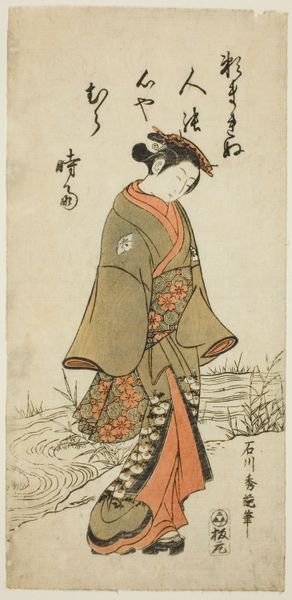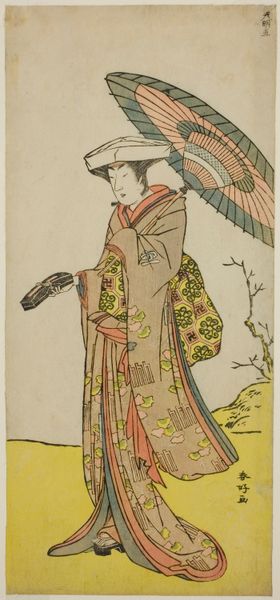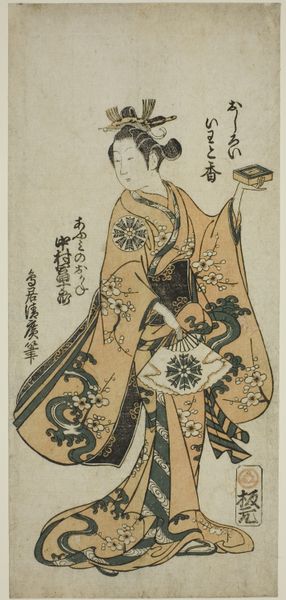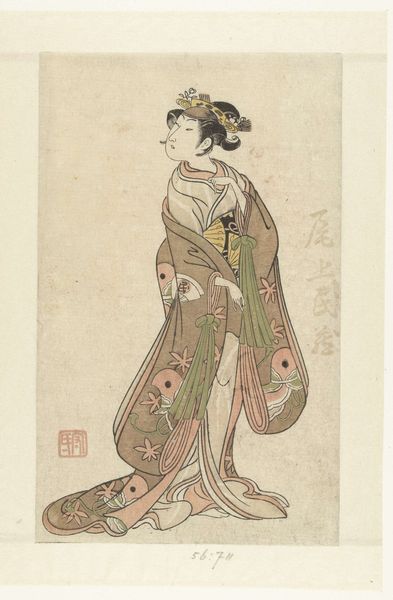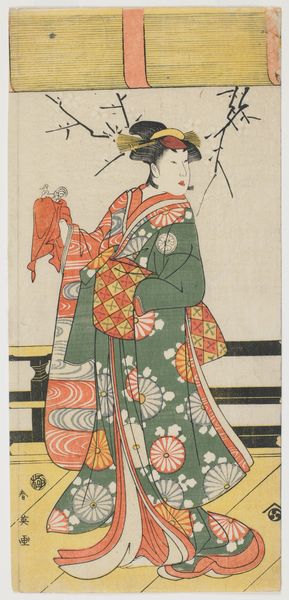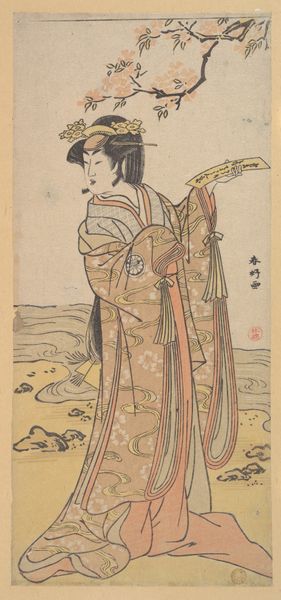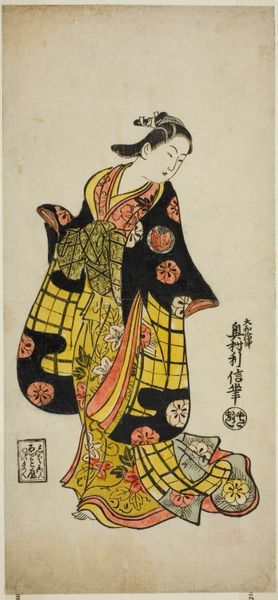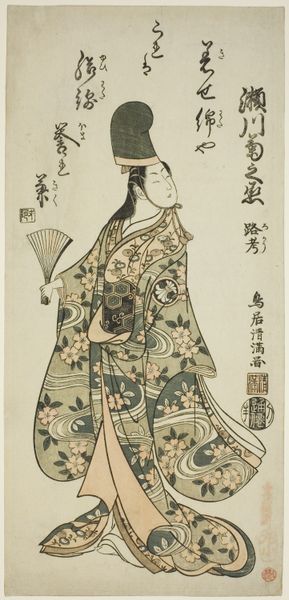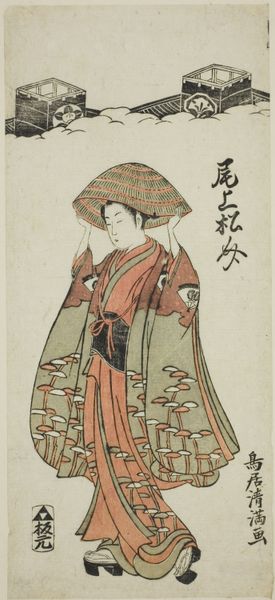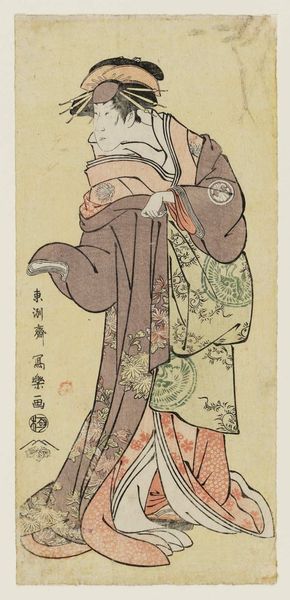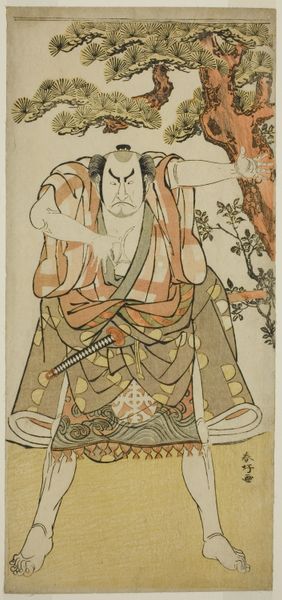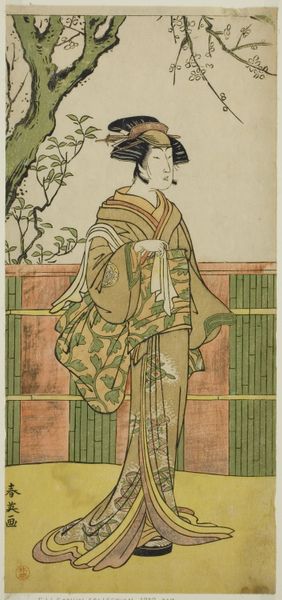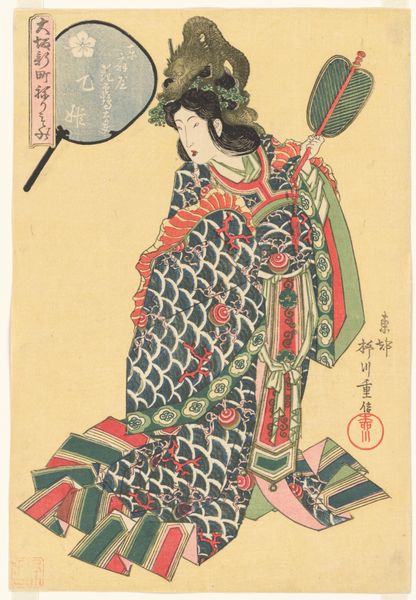
The Actor Segawa Yujiro I as Oshichi in the play "Edo no Haru Meisho Soga," performed at the Ichimura Theater in the third month, 1773 1773
0:00
0:00
print, woodcut
#
portrait
# print
#
asian-art
#
ukiyo-e
#
figuration
#
woodcut
#
genre-painting
Dimensions: 10 13/16 × 5 1/4 in.
Copyright: Public Domain
Editor: This is Torii Kiyomitsu's woodblock print from 1773, "The Actor Segawa Yujiro I as Oshichi." There’s something so delicate and stylized about the figure, and the flowing lines create a sense of movement. What strikes you about this piece? Curator: The depiction of Segawa Yujiro, playing a female character, Oshichi, within the context of 18th-century Japanese theater is fascinating. It reflects the complex relationship between gender, performance, and social expectation during that era. Do you think Kiyomitsu is simply recording a theatrical event? Editor: It feels like more than just a record. There's a heightened drama and idealized beauty that suggests a specific message. Curator: Precisely. Ukiyo-e prints like this one often functioned as a form of publicity, but also circulated ideas about beauty, celebrity, and social roles. Notice how the details in the costume design become significant signifiers of wealth, taste, and perhaps, rebellion, since Oshichi's story involved defying social norms. Editor: The intricate patterns do draw the eye. Was this kind of imagery also accessible to a wider public? Curator: That's the key. Prints were relatively affordable, which meant that images of actors and fashionable figures permeated many levels of society. Consider the power dynamic at play: elite patronage supported the theater, influencing both performers and audiences, yet these prints also shaped perceptions and challenged existing hierarchies. The politics of imagery were definitely at play. Editor: I hadn't thought about how these prints actively shaped society's views back then. It goes beyond simple documentation. Curator: Indeed. It's about understanding art's entanglement with the socio-political landscape. Editor: That's given me a fresh perspective. It's fascinating how much social context can be embedded in a single image.
Comments
No comments
Be the first to comment and join the conversation on the ultimate creative platform.
